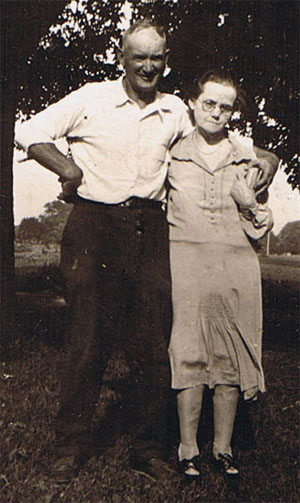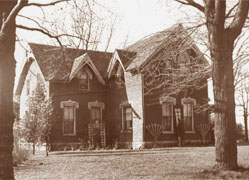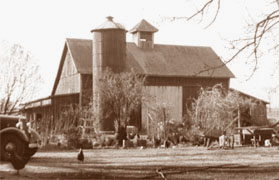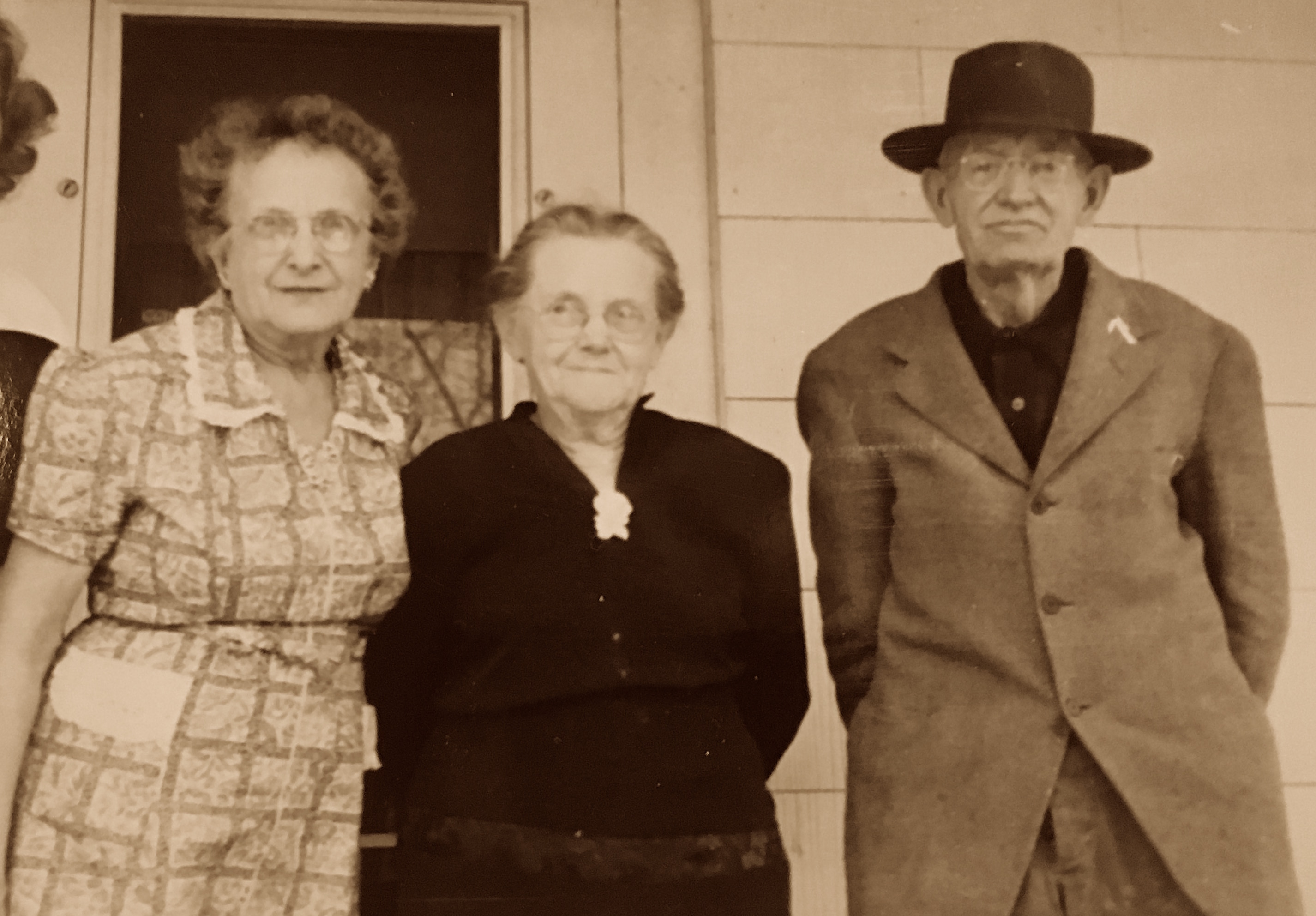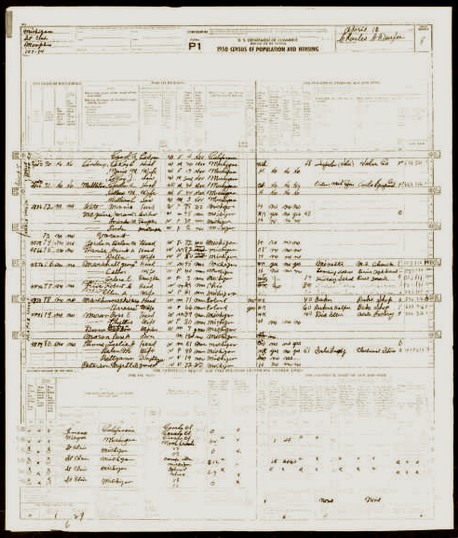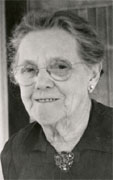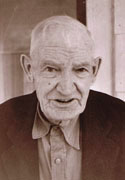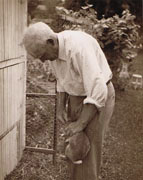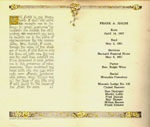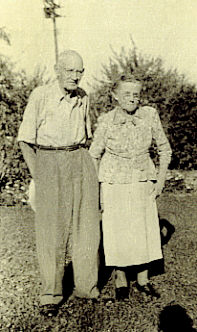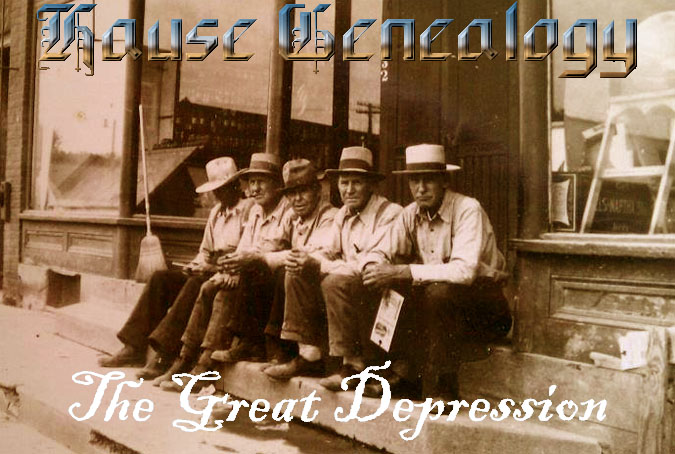 |
"There is no cause to worry. The high tide of prosperity will continue."
—Andrew W. Mellon, Secretary of the Treasury (September 1929).
|
||||||||||||||||||||||||||||||||||||||
The Great Depression hit St. Clair County hard, as well. Just a few years before, in 1926, the St. Clair Inn had opened its doors as the first U.S. hotel to be equipped with central air conditioning. The Rotary Club had even sponsored the fundraising for the development. But by the end of that decade, most of the men in the area were unemployed (the county eventually received federal relief funds and put all the men to work repairing the deteriorating roads and bridges in the area).
Frank was still trying to make it as a farmer, but once again a fire threatened his livelihood. The Port Huron Times Herald reported on 2 Aug 1928 that as Frank returned home from a Chautauqua entertainment he discovered that an oil heater had exploded in his barn, setting the building ablaze. By the time the fire department had put out the fire, the floor had been destroyed and a hundred chickens suffocated. Soon after, Frank and Fladella then moved into Melissa's last home in Riley Township, at 34730 Maple in Memphis Village. Frank's sister, Alice Young, also lived in the house, which was split in two, staying there until she died in 1939.
|
|
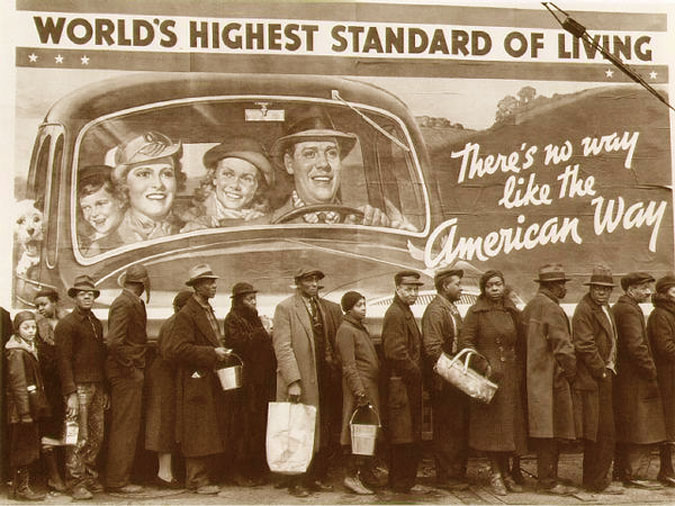
|
|
Meanwhile, the economic crisis of October 1929 had forced many companies in industrialized Michigan to close. Detroit was heavily dependent on large, locally based industrial manufacturers, and when these companies were forced to suspend operations, a banking crisis developed. The Ford Motor Company managed to remain in business, despite losses of as much as $68 million per year, by lowering the company's minimum wage to $4 per day. Then Ford Motors (and Edsel Ford, personally) extended about $12 million in loans to these banks in an effort to maintain their solvency. But these efforts failed and the banks were forced to close in February 1933. Ford lost over $32 million in deposits and several million more in bank securities. General Motors suffered a similar crisis. It was a tough time to make a living in Michigan—Memphis even had its own banking scandal: The State Bank closed on August 18, 1932, and cashier Henry Brown disappeared, but was found in northern Michigan a few days later in a "demented state," according to the Memphis Bee. He was brought home to be charged with embezzling $500 from the bank. More shortages were discovered (eventually reaching $3,300.00), and Brown was subsequently found dead with his wife, Ameretta, in an apparent suicide pact. On the run, they had parked their car in the orchard of the James Sweeney farm, where Ameretta inhaled ether, and Henry shot her and then himself in the head with a shotgun. But Memphis was still a friendly, forgiving town—at the end of its murder-suicide report that September, the Bee still noted, "Henry Brown was born, raised and lived the greater part of his life in this community, and for the past 12 years has been the cashier of the State Bank here. He had the confidence of the majority of the people who had always known him."
Through the hard times and scandals, Memphis remained a close-knit community. Every Wednesday night a free movie was shown outdoors on a screen hung in front of the Memphis Hotel. Bordman St. was blocked off to accomodate the crowd, and the movie projector was set up across the street.¹
Frank and Fladella could be generous, too. Memphis resident Linda McGuire-Hannon remembered in 2014: "Frank & Della Hause (as I knew her) lived on Maple St when I was a little girl. Della would give me a treat of brown sugar on a piece of waxed paper when I would visit her!" With so many empty rooms in their house, Frank and Fladella began renting to borders. Eventually the family house would be split into two homes and sold (Basil would eventually buy both homes and use the west lot for a tree farm). Linda McGuire-Hannon notes: "Several overgrown shrubs are still there on the lot today."
|
|
|||||||||||||||||||||||||||||||||||
The next year, the Japanese attacked Pearl Harbor, and the United States was plunged into World War II. More than half a million men and women from Michigan served in the military. On the home front, Michigan became one of the most important states in the war effort. The automobile industry stopped producing consumer cars and switched to tanks and bombers. The unemployment rate nearly vanished and per capita income of Michigan residents increased 115 percent.
|
|
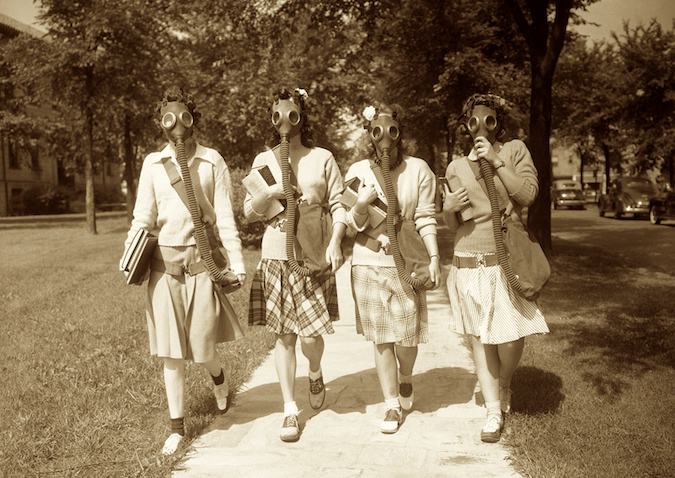 Four University of Detroit students try out gas masks in a campus drill on June 23, 1942. (FS/AP photo) |
|
Frank and Fladella kept the family's home base in Memphis. They had outlived two of their sons, Prohibition, the Great Depression, and two World Wars, and yet another fire, when faulty wiring caused the refrigerator to catch fire as they slept in their newly remodeled home, leaving $250 in damage. They also witnessed the onset of a post-war boom economy—and they watched the number of Hauses grow right along with it. But as the family increased in number, the distance between their homes increased, as well. Frank and Fladella's sons had ventured off to find work and make their fortunes in other areas. Basil worked for Dodge in Indiana; Raymond moved to California and dabbled in law and land speculation; But Carlisle had a safe job in Detroit, teaching.
Frank and Fladella still had a working farm that raised goats, rabbits, chickens and livestock—but the land was no longer being used to grow any crops, because in the post-Depression U.S., a farmer could actually make more money by not growing food. Marjorie Hause remembers sitting in the back seat of a car as her grandfather, Carlisle, and Frank argued about all of the unfarmed property at the Raven House. Laws had been passed during the Great Depression (and remain in place to this day) in which farmers are paid not to grow corn, in order to lower the supply and keep prices high. Carlisle felt Frank could make more money growing the corn and selling it on the open market, but Frank was satisfied with what the government paid him for growing nothing.
|
|||||||||||||||||||||||||||||||||||
|
|
True to his word, Carlisle returned with the needed supplies a few minutes later, ignoring the complaints of the women downstairs (and the moral arguments of his paternal ancestors), and Frank's last night was spent drinking beer, eating well, playing cards and telling stories about the family.
|
|
Then Fladella's sons got the bright idea of opening a tree nursery to support her. (The sign for the Hause 'Green Bush' Nursery, painted by Basil Hause, hangs today in the Memphis Historical Society.) Basil was the most responsible for the business. He bought the property for the farm from Fladella at her residence on Maple, and adjoining acreage from Helen May Yerden, who now occupied the part of the house that had been separated from the first. Basil asked Fladella to handle the company finances and manage the profits. In this way the sons were finally able to support Fladella without her feeling like it was charity. Which was a good thing, because Fladella lived on into her nineties!
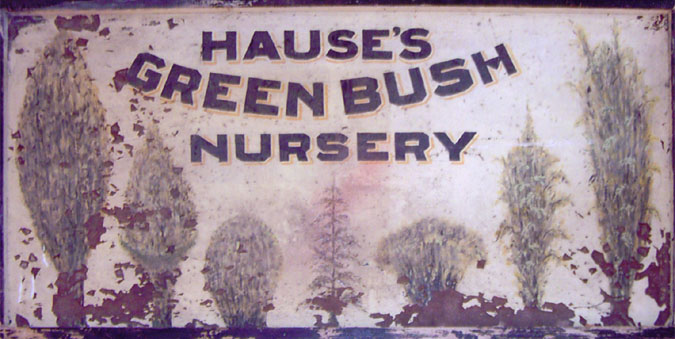 |
But the Hause brothers' nursery was just a side-business. These Hause men didn't want to become farmers, like their ancestors. They were looking for new challenges. They had their father's thirst for adventure, but combined with their mother's pragmatism and bravery. They all had their grandfather Laban's determination and ambition, as well, and to top it all off, developed a sense of flair and substance, like Melissa.
They were college-educated, nattily-dressed, with long, fast cars (Hause men all had to drive Cadillacs). They hunted large game, speculated on land, and were determined to live well. But they seemed to eschew Frank's relaxed nature and lifestyle, and practiced a more conservative way of life. (Their children would be raised strictly, unlike them.) The days of exploring and settling the Michigan frontier were over. They had to deal with an industrialized state, driven by a fast-growing auto industry that had caused the city of Detroit to grow from a population of 300,000 in 1900 to over 1,850,000 in 1950. The forests of their youth were replaced by factories. Raymond had moved to California to enter the land speculation field. Basil joined the army and eventually worked in Ohio, but the Great Depression had brought him back home with his family, where Carlisle got him started in teaching, as well. Carlisle had stayed closer to home, where he could continue to hunt and fish in his favorite spots...
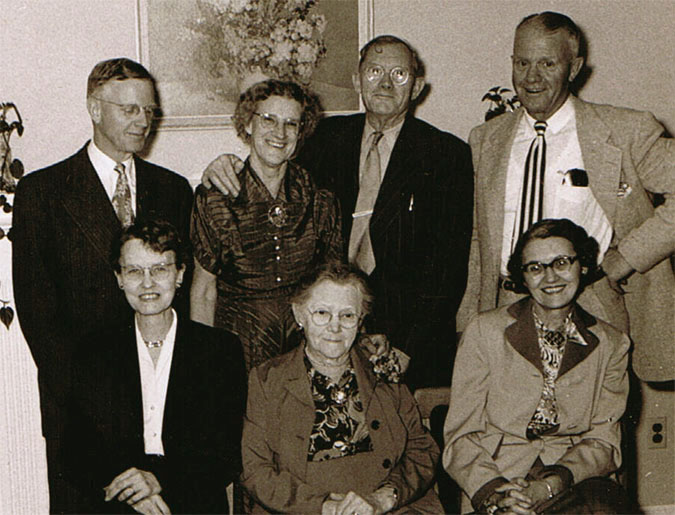 A rare shot of the three Hause brothers and their wives reuniting to surround Fladella in the mid-20th Century (Basil and Hazel Hause, left, Ray and Ethyl Hause, center, Carlisle and Emily Hause, right). And if that wasn't rare enough, they're all smiling, too!!! |
 |
Her son, Carlisle, would live another ten years in Michigan before his death. But the next generation was moving on once again.
Michigan had changed enormously in the first half of the Twentieth Century. What had been untamed rural wilderness just a hundred years before was now crowded and industrialized, as factories overtook the farms. The Great Lakes had grown polluted and stagnant—the fish more full of Mercury than a Lincoln automobile plant. The Hause men were't cut out for factory work, anyway. They needed to be challenged. And although Fladella had challenged them with a business side of a broomstick on occasion, it wasn't enough. A century after Laban Hause had left New York, it was time for our line to move on, again. This time to...

|
|
1917 - 1983: The Depression is over, and Carleton Marchant Hause, Sr., son of Carlisle, who worked in a factory during World War II, searches for new opportunities, a new career, and warmer winters on the west coast, ending up in beautiful Southern California. The Hauses are no longer a family of farmers: they becpme a family of educators.
Therefore, Carleton Sr. begat "Legendary coach" Carleton Jr., who followed Carleton Sr. to SoCal and begat Kathleen, Eric, Michele and "non-legendary" Jeffrey Carleton Hause, who is tired of typing "begat."
NOTES ON THIS PAGE:
¹—Milt's drug store catered to town's sweet tooth, by Joe Parrinello, Memphis, 1987.
TOP PHOTO: The men of Memphis hanging out in front of the downtown drug store. (Memphis Historical Society)
|
CHAPTER 1: THE LEGEND OF JOHN (JOHANNES) HAUSE (1690-?) CHAPTER 2: JOHN HAUSE OF WARWICK (1719-1794) CHAPTER 3: WILLIAM E. HAUSE (1750-1818) CHAPTER 4: JOHN HAUSE (1773-1844) AND WESTERN NEW YORK CHAPTER 5: AUGUSTUS HAUSE (1804-1875) AND THE ERIE CANAL CHAPTER 6: LABAN AUGUSTUS HAUSE (1831-1906) CHAPTER 7: FRANK AUGUSTUS HAUSE (1867-1951) CHAPTER 8: TWENTIETH CENTURY MICHIGAN CHAPTER 9: CARLISLE HAUSE (1891-1972) CHAPTER 10: THE GREAT DEPRESSION CHAPTER 11: CARLETON MARCHANT HAUSE (1917-1983) CHAPTER 12: CARLETON MARCHANT HAUSE, JR. CHAPTER 13: AFTERWARD - THE TWENTY-FIRST CENTURY APPENDIX #1: HAUSE FAMILY TIMELINE APPENDIX #2: WILLIAM HAUSE GENEALOGY APPENDIX #3: THE HAUSE FAMILY IN THE CIVIL WAR APPENDIX #4: HAUSE FAMILY BIBLES
|

